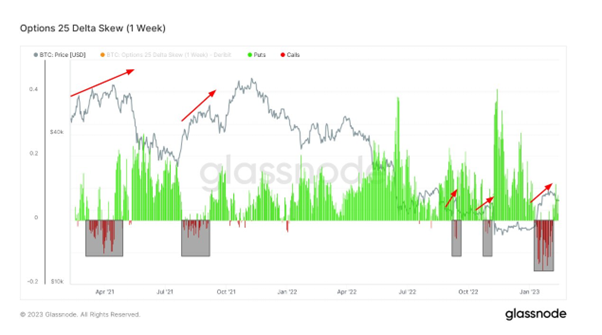Bitcoin Price: US$ 22,199.84 (+1.96%)
Ethereum Price: US$ 1,555.71 (+3.35%)
Defining Active Players Within Crypto Gaming
- Crypto games, often referred to as GameFi, have created an allure previously nonexistent in traditional games for the average player — monetary incentives. The amalgamation of gaming and finance has pulled in players worldwide along with, inevitably, gaming bots. Bots are present in all forms of gaming, but their numbers are relatively insignificant within the traditional gaming population
- The extreme disparities among weekly active users (WAUs) and unique active wallets (UAWs) in top games highly correlate to their barriers to entry. In the past week, Alien Worlds boasted 6x and 17x the weekly UAWs and WAUs of Axie Infinity. Comparing the gaming mechanics of Axie Infinity with Alien Worlds shines some light as to why.
- First, Alien Worlds is an idle mining game whereas Axie Infinity is a strategy battle game with a complex breeding system. Second, mining within Alien Worlds is free, whereas there are financial barriers to assembling a team of Axies to battle, with most players requiring scholarships to begin. Thus, it is reasonable to assume that top games by DAUs and WAUs correlate to an easy barrier to entry for players that also extends to bots. As we will see below, duplicate wallets and bots make up a significant portion of gamer metrics.
- Unsurprisingly, blockchains that sacrifice decentralization for higher throughput and gas costs dominate the GameFi ecosystem. Simply put, most P2E gamers reside in third-world countries, where gaming is another source of income and cheap fees are necessary to realize profits. Although Ethereum is the most prominent blockchain by TVL, its relevance in average daily active players across all chains is practically 0%. When juxtaposed against Wax, Wax supposedly has 310x the gamers and is responsible for 34% of the total player population.
- Continue on Delphi…
Binance and Huobi Freeze $1.4M in Crypto Tied to Harmony Bridge Theft
- Crypto exchanges Binance and Huobi on Tuesday froze $1.4 million in crypto tied to the Harmony Bridge heist and its alleged North Korean hackers, according to crypto tracing firm Elliptic.
- In a blog post, Elliptic said it provided intelligence to the two exchanges that prompted them to freeze accounts. It said it traced the funds back to the $100 million hack of a “bridge” that allowed Harmony blockchain users to move crypto assets between different ecosystems.
- Binance and Huobi did not immediately respond to a request for comment.
Stablecoin Markets Pick Winners and Losers Ahead of SEC Paxos Lawsuit
- While the Securities and Exchange Commission’s lawsuit against Binance stablecoin issuer Paxos creeps forward, a growing list of crypto policies appear poised to be set in courtrooms.
- Even as those disputes play out, however, the stablecoin market seems to have already picked winners and losers.
- The industry has been operating for years without much of a regulatory framework in the U.S., leaving open questions about how staked crypto will be taxed, whether the Treasury Department can sanction an Ethereum mixer, or if Gemini’s Earn program should have been registered as a security.
- Now, in anticipation of a lawsuit from the SEC that asserts that Binance USD is an unregistered security, Paxos has stopped issuing BUSD tokens. It will, however, continue using the reserves backing the stablecoin to redeem them over the next year.
Fewer Than Half of New Ethereum Blocks Over the Past 24 Hours Are OFAC Compliant
- After the U.S. government blacklisted Tornado Cash transactions for U.S. people in August, there was a swift response by validators on the Ethereum blockchain to exclude sanctioned transactions. For many in the crypto industry, such moves were decried as censorship – directly counter to the vision of a decentralized network free from government interference.
- Now, however, the trend is going the other way, and more blocks with Tornado Cash are going through even if they’re not compliant with U.S. Treasury Dept. sanctions.
- According to an MEV watchdog site, just 49% of blocks that made it onto the Ethereum blockchain over the past 24 hours were OFAC-compliant, meaning the blocks excluded transactions that have been sanctioned by the U.S. Treasury Department’s Office of Foreign Assets Control.
- This is a significant decrease in censorship from Ethereum’s past. Ethereum hit an all-time high for censorship on Nov. 21, when 79% of blocks relayed on Ethereum excluded OFAC-sanctioned transactions. The last time that Ethereum’s censored blocks were below 50% was Oct.16.
684 million BUSD burned for redemptions amid US regulatory scrutiny
- Just over a day after it categorically denied regulator claims Binance USD (BUSD) is a security, Paxos has burned some 684 million of the stablecoin for U.S. dollar redemptions, on-chain data show.
- Formerly an issuer of BUSD, Paxos ceased distributing the stablecoin after the company received a Wells notice from the Securities and Exchange Commission.
- Dollar parity redemptions for BUSD will be supported through at least February 2024, Paxos said.
- To facilitate redemptions, Paxos sends BUSD to a burner address, destroying the tokens, which initiates a smart contract-driven process that refunds U.S. dollars to users from the reserve underpinning the stablecoin.
NFT Marketplace Blur Releases Native Token for Community Ownership
- After months of anticipation, zero-fee non-fungible token (NFT) marketplace Blur released its native token Tuesday.
- The token will allow traders to participate in the platform’s governance protocol, as well as profit from the marketplace’s success through community ownership.
- Blur said in a tweet that traders have 60 days to claim their airdropped BLUR tokens, which are trading at roughly 50 cents at press time, according to CoinGecko.
- “Since launching [four] months ago, 146,823 users have traded $1.2 billion dollars [sic] worth of NFTs on Blur (wash trading excluded),” Blur said in a tweet. “This growth is breathtaking and was only possible with the support of the Blur community.”
- According to data from DappRadar, Blur’s 24-hour trading volume stands at about $9.5 million, second only to leading marketplace OpenSea, whose trading volume is around $12 million.
Lido DAO mulls proposals to sell or stake $30 million worth of ether
- The Lido community is discussing a pair of governance proposals submitted by Steakhouse Financial, the financial unit of the Lido DAO, which call for the project to stake or sell the ether tokens held in its treasury.
- Lido DAO holds 20,304 ether worth $30 million as part of its $350 million treasury. The funds are held in the project’s Aragon contract, as is the rest of the treasury, and Lido has maintained the ether balance since completing a treasury diversification process in April 2022.
- Proposals under consideration include recommendations for a full or partial sale of the ether tokens which would see the DAO swap ETH for a stablecoin that could be used to extend the project’s runway. A partial sale could also see the remaining ether balance being staked.
- The DAO could also stake all of its ether holdings, as suggested in one of the proposals.
- Selling or staking the ether are not the only options on the table, as there are also recommendations to use the tokens to provide liquidity on Curve or to purchase NFTs.
- The deliberations on the DAO forum may lead to a governance vote. This process first involves a Snapshot vote to gauge delegate sentiments and a final on-chain vote to finalize the preferred option.
Polygon eyes mainnet beta release for zkEVM Layer 2 next month
- Polygon is planning to release a new Layer 2 scaling solution, zkEVM, in a mainnet phase on Mar. 27.
- zkEVM will be a zero-knowledge or ZK-Rollup that performs off-chain computations on a secondary layer for faster and cheaper transactions while prioritizing security. The aim is to expand the Ethereum network’s scaling capabilities further.
- Polygon claims its zkEVM will be equivalent to Ethereum’s Virtual Machine, which means that the network is expected to support the same code as Ethereum. Due to this factor, developers will be able to onboard apps from Ethereum and use them on Polygon’s zkEVM network without making significant changes.
- “Polygon zkEVM is the gold standard for EVM-equivalence, having passed 100% of the Ethereum test vectors that apply to a zkEVM. Developers can copy-paste code that works on Ethereum and use it to build on Polygon zkEVM,” the team said in a statement shared with The Block.
- Although Layer 2 solutions like Arbitrum and Optimism, which are Optimistic Rollup-based solutions, have seen growth, zero-knowledge Layer 2 solutions currently lack Ethereum compatibility.
- zkEVM has been in development for over a year and has gone through two third-party security audits. Over the past year, Polygon zkEVM, Starknet, zkSync, and Scroll have fiercely competed to develop a functioning ZK-based Layer 2 that can support Ethereum apps. None of these have yet released a product for public use. But this could change with the launch of Polygon’s zkEVM even though there could be last minute development challenges. In October, Polygon’s competitor zkSync released a zkEVM solution but for restricted internal testing only.
Binance CEO Distances Himself From BUSD Stablecoin as Regulators Act
- Binance Chief Executive Officer Changpeng Zhao distanced himself from the Binance-branded stablecoin BUSD after U.S. regulatory action caused minting to cease.
- On Monday, BUSD issuer Paxos said it would stop minting new tokens following a request from the New York Department of Financial Services (NYDFS), but denied regulators’ claims the cryptocurrency, pegged to the value of the U.S. dollar, constituted an unregistered security.
- “BUSD is not issued by Binance,” Zhao said during a Twitter Spaces on Tuesday. “We have an agreement to let them [Paxos] use our brand, but that’s not something that we created.”
- “With BUSD gone, BUSD slowly winding down over time, we will will continue to work with more stablecoin issuers or creators,” Zhao added, citing existing support for other stablecoins such as USD coin (USDC) and tether (USDT).
- Zhao also hit out at claims, reported by Bloomberg, that rival stablecoin issuer Circle had sounded the alarm with NYDFS over concerns that Binance did not have enough reserves to back up BUSD tokens.
- “I don’t really believe Circle would do that – I don’t think a professional industry peer will want to do that to another industry peer,” he said. “It just hurts the overall industry as we’re seeing now … I wouldn’t take that article too seriously right now.”
Bitcoin, Ethereum Trade Sideways as Market Mulls Mixed CPI Report
- Consumer prices rose more than expected in January, a potentially negative sign of what’s in store for risk assets like cryptocurrencies in 2023 as the Federal Reserve tries to tame inflation through a campaign of interest rate hikes.
- The Consumer Price Index (CPI), which tracks price changes across a broad range of goods and services, rose 6.4% in the twelve months through January, the Bureau of Labor Statistics (BLS) said Tuesday, overshooting expectations of 6.2%.
- “This higher-than-expected inflation report, even though it wasn’t a lot higher, it adds to the potential argument of ‘higher for longer’ that the Fed has been pushing,” Head of Research at IntoTheBlock Lucas Outumuro told Decrypt.
- Bitcoin and Ethereum held steady, as major stock indexes like the S&P 500 edged up premarket roughly 0.04%. Other coins, including Cardano (ADA) and Dogecoin (DOGE), both rose slightly, enjoying 1.7% and .1% gains on the day.
- “Unfortunately, [digital assets] are still very highly correlated to stocks,” Outumuro said. “Once there is less dependence on these data prints, the markets may begin to decorrelate again.”
Bitcoin’s UTXOs Are Close to All-Time High; Here’s Why It Matters
- Activity on the Bitcoin network is hitting an all-time high because the market has been very receptive to the new collections minted via Ordinals, a type of non-fungible token (NFT) stored on Bitcoin.
- There’s another metric that’s important, too: unspent transaction output (UTXO). And the UTXO count of bitcoin (BTC) is ticking upwards, set to challenge its all-time high of 84.6 million from November 2022 – when there was a flurry of on-chain activity as traders tried to escape the wreckage of FTX’s collapse.
- UTXO refers to the individual units of bitcoin, called satoshis, or sats, that are locked in transactions on the blockchain.
- When a transaction occurs, bitcoins are sent from one address to another and the remaining amount is sent back to the sender in the form of a UTXO.
- These UTXOs can then be used as inputs for future transactions, essentially proving that the sender has the necessary funds to make the payment.
- Now, this spike in UTXO could be explained by an increase in small, retail, interactions with bitcoin. It also shows that more individuals – as opposed to whales or large investors – are currently active on chain.
- “It seems like the overall trading size of the bitcoins has decreased and investors are carefully watching how the market direction would turn out with the UTXO value bands with less than 0.01 BTC are the main reason for the significant increase in the UTXO counts,“ CryptoQuant contributing analyst Dan Lim wrote in a note to CoinDesk. “It’s good progress as there are market participants tapping into the market.”
Morgan Stanley: Falling Stablecoin Issuance Is Negative Sign for Crypto Trading
- Stablecoins play a vital role in crypto trading and their products potentially compete with the fiat banking system, Morgan Stanley (MS) said in a research report Monday.
- The bank notes that U.S. regulators have begun limiting stablecoin products, adding that stablecoin issuance is important for crypto traders. Falling stablecoin market capitalization is an indication of falling cryptocurrency liquidity and leverage, the equivalent of quantitative tightening for the crypto market, the report said. A stablecoin is a type of cryptocurrency whose value is pegged to another asset, such as the U.S. dollar or gold.
- Morgan Stanley notes that stablecoin market capitalization started falling at around the same time as the Federal Reserve balance sheet.
- In the crypto bull market of 2021, bitcoin’s (BTC) price led the growth in stablecoin market capitalization, while during the bear market of 2022 the opposite occurred, the note said.
- “Rising market prices enticed traders to take on more leverage, in the form of borrowing stablecoins, which was then used to buy more crypto,” analysts Sheena Shah and Kinji Steimetz wrote. “Falling market prices were catalyzed by a reduction in crypto liquidity caused by traders closing long crypto positions, followed by redemptions of the stablecoin received.”
- The bank expects U.S. crypto regulatory efforts to focus on stablecoin regulation, and says issuers will probably have to register and prove they hold enough liquid assets to back the issued stablecoins.
- “All stablecoins rely on market trust in the system’s ability to keep a stable value,” the note added.
Avalanche Blockchain Had 1,500% Transactional Growth in 2022: Nansen
- Transactions on the Avalanche blockchain grew as much as 1,500% last year compared to 2021 even as the broader industry saw the collapse of several centralized crypto players and entered a technical bear market.
- In Avalanche’s fourth-quarter report shared with CoinDesk, data and analytics firm Nansen said the network demonstrated strength with notable increases in both non-fungible trading (NFT) trading volume and the overall number of transactions.
- “While the network ended November 21, 2021, with nearly 27 million transactions, Avalanche’s cumulative total surpassed 450 million transactions on November 21, 2022, marking an astounding 1,507% increase in a single year,” Nansen said.
- Such transactional activity came even as the total value of tokens locked on Avalanche-based decentralized finance applications slid from 2021’s $15 billion peak to just over $900 million in November 2022, data from DeFiLlama shows.
Stablecoin Lender Liquity’s LQTY Token Surges 45% as New York Regulator Goes After Paxos’ BUSD
- LQTY, the native token of censorship-resistant decentralized stablecoin lender Liquity, surged Monday after a New York regulator ordered Paxos to stop minting its centralized dollar-pegged cryptocurrency BUSD.
- The LQTY token rose 45% to a six-month high of $1.07, registering its biggest single-day percentage gain in at least a year, per data sourced from the charting platform TradingView.
- The rally likely stemmed from the Paxos-BUSD drama that triggered fears of a regulatory crackdown on the broader centralized stablecoin ecosystem, including Circle’s USDC, and underscored the need for decentralized and censorship-resistant stablecoins like Liquity’s LUSD.
- “BUSD proves the need for decentralized and censorship-resistant stablecoins. This is indeed the mission of Maker and Liquity’s LUSD. Maker’s Endgame Plan foresees a regulatory crackdown on crypto and [real-world assets], so it’s preparing to make DAI censorship resistant. The same mission drives LUSD stablecoin, but its approach is focused on minimal governance and ETH as the only collateral,” pseudonymous DeFi researcher Ignas told CoinDesk.
- Liquity is an Ethereum-based protocol offering interest-free loans against a minimum of 110% collateral in ether (ETH). The loans are paid out in the form of a dollar-pegged stablecoin LUSD and borrowers only need to pay a small loan generation free. The redemption and loan issuance fees are adjusted algorithmically. The LQTY is a reward token created by the protocol to incentivize users, frontends and stability providers – the first line of defense in maintaining system solvency.
- “LUSD backed by ETH collateral is being perceived as more defensible against regulatory pressure by the market,” Lewis Harland, portfolio manager at Decentral Park Capital, said.
Glassnode:
- #Bitcoin Options 25 Delta Skew is implying puts> calls going into #CPI.
- Each time calls outweigh puts has seen us longing for bear market rallies.




